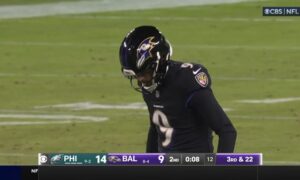For a general manager with about as pristine a reputation as any, even Ozzie Newsome of the Baltimore Ravens acknowledged recently that their more recent draft classes have not quite been on par with what has been the franchise’s—and his—legacy.
Part of the reason for this has been, of course, because the Ravens have done a much better job of turning those quality drafts into quality rosters that win games, and reach the playoffs, and win some of those games, too. As Newsome pointed out, the end result of that tangible success is a lower slotting in the less tangible draft lottery.
The Pittsburgh Steelers have been very aware of this for quite a while as one of the most consistent franchises of the modern era. They have not had a top-10 draft pick in a very long time, and the last time they were on the cusp at 11, they managed to come away with a franchise quarterback that was the missing ingredient to returning to the precipice of the sport.
One area in which the Steelers and Ravens have differed in their offseason strategy, however, is perhaps in the fact that the Ravens actually incorporate more strategy into their offseason—or at least, more consciously work through every roster-building channel.
In particular, the Ravens more so than just about any other team have gained a wealth of draft picks via the compensatory process, whereby teams are awarded compensatory draft picks beginning in the third round in compensation, primarily, for their free agency losses and gains over the course of the prior season.
This is a formula with which Baltimore openly and consciously work to build their drafts. They have strategically angled to allow certain high-valued free agents to walk in free agency, particularly when they felt that they could acquire notable help among street free agents, who do not count toward the compensatory pick formula.
It is no surprise, then, that Ravens assistant general manager Eric DeCosta has boasted that “no team has had more money spent on their players over the last seven years” than have the Raven”. Neither the statement of fact, nor the boast, are surprising, as he added, “that’s an indication that other teams value our players”.
This current offseason has certainly been very much in line with what we have come to expect from a typical Ravens offseason, as they have lost some very notable free agents in Kelechi Osemele, who in particular commanded a big contract, but also Courtney Upshaw among others.
Meanwhile, they have continued to exploit the street free agent market by signing players that were released by their previous teams in wide receiver Mike Wallace. Further trouble with safety Will Hill prompted a bit of straying from the norm, as his ultimate release helped prioritize the high-profile signing of Eric Weddle.
That will be disadvantageous to them when it comes time to hand out the compensatory draft picks, even if Osemele’s alone may net them a third-rounder. Meanwhile, the Steelers have also lost a number of prospects, and even with a couple of moderate additions could still stand to do well in the next draft.








